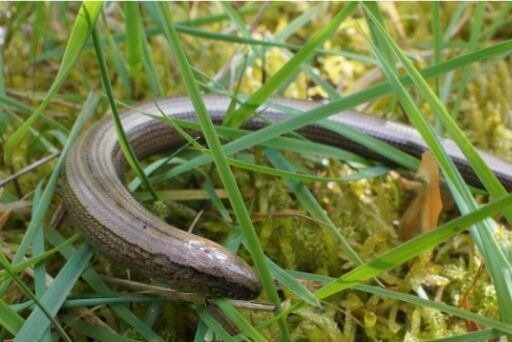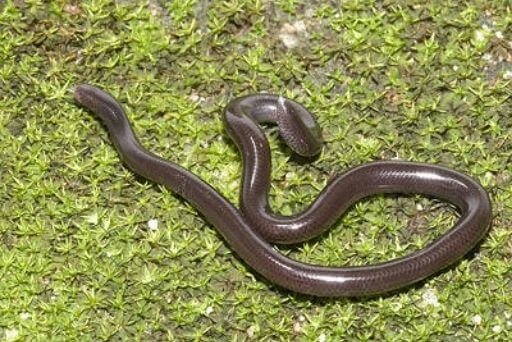Feminist snakes that don’t need males to reproduce – Parthenogenesis in Snakes
In the last few decades, several cases have been recorded where animals give birth or lay eggs without mating. Researchers have observed parthenogenesis (reproducing without mating or asexuality) occurs in a diverse variety of animals including birds, sharks, rays, lizards, fishes, etc.
But this particular mode of reproduction is rare among snakes. So far, the only species of snake documented to reproduce without a male is Brahminy blind snake (Indotyphlops braminus) formerly known as Ramphotyphlops braminus.

In 1974, the researcher, McDowell, observed and provided proof that all Brahminy blind snakes were female. He believed that Brahminy blind snakes were all-female species who reproduce asexually. McDowell collected 114 Brahminy blind snakes and observed that there was not a single male snake present among them.
Later on, in a 1980 research by a researcher named Ronald A. Nussbaum, the hypothesis given by McDowell was re-observed. The research paper was published in a journal called “Herpetologica, Vol. 36”. The journal published research papers and essays written by various biologists, conservationists, herpetologists, ecologists, and researchers. Herpetologica focuses on the behavioral, ecological, genetical, morphological, physiological, and observational studies related to the biology of reptiles and amphibians.
The researcher, Ronald A. Nussbaum, collected 32 specimens of Brahminy blind snakes. Out of 32 specimens:
- 16 were collected by the researcher himself
- 13 from the British Museum of Natural History
- 3 from the Peabody Museum of Natural History
The majority of the specimens of Brahminy blind snake for this study were collected from the Seychelles Islands.
The researcher observed all the characteristics (Size, Head scales, Body scales, Number of vertebrae, Color, and sex) of all the 32 specimens of Brahminy blind snakes. Nussbaum found that all the 32 specimens of Brahminy blind snakes were females. He observed the gender of all the specimens by the presence of ovaries and the right oviduct. The Statista, given by Ronald A. Nussbaum, strongly agrees with the notion that the Brahminy blind snake is a parthenogenetic species.

Parthenogenesis in Snakes:
For years, Brahminy blind snakes were believed to be the only pure feminist snakes who reproduce without mating with males. But recently many cases have been documented where other snake species have also reproduced eggs or litters without mating.
A research article, published in a journal in 2016, discussed several cases of parthenogenesis in other species of snakes. The research article was published in the Biological Jounarl of the Linnean Society, Volume 118, Issue 2. The journal mainly focuses on research studies related to the process of organic evolution. All the research papers and essays in the journal are either observational or theoretical studies of evolutionary biology.
The research article explaining the various patterns of parthenogenesis in snakes was written by Dr. Warren Booth (Associate Professor of Molecular Ecology, The University of Tulsa, USA) and Dr. Gordon W. Schuett (an American evolutionary ecologist from the Copperhead Institute, Spartanburg, USA).
Dr. Warren Booth and Dr. Gordon W. Schuett explained two different types of parthenogenesis in snakes:
- Obligate parthenogenesis
- Facultative parthenogenesis
In the first type of parthenogenesis, females reproduce asexually. This type of parthenogenesis is only limited to one single species of Brahminy blind snake (Indotyphlops braminus).
Whereas in the second type of parthenogenesis, female snakes reproduce either sexually or via asexual reproduction. This type of parthenogenetic reproduction has been observed in many other species of snakes. Snakes species like Boa constrictor (Boa constrictor), Brazilian rainbow boa (Epicrates cenchria), Colombian rainbow boa (Epicrates maurus), Green anaconda (Eunectes murinus), Blood python (Python brongersmai), Wandering garter snake (Thamnophis elegans vagrans), and many more have been documented to reproduce without mating with male snakes.
Both researchers noticed that facultative parthenogenesis (FP) is mostly widespread in Acrochordidae, Boidae, Crotalinae, Pythonidae, and Natricinae lineages of snakes. In the early studies, facultative parthenogenesis in snakes was believed to be an evolutionary novelty. Previous researchers believed that FP only happens when snakes remain in captivity for a longer period. But later on, even in natural surroundings, cases of facultative parthenogenetic reproduction in snakes were observed.

Dr. Warren Booth and Dr. Gordon W. Schuett address five characteristics of parthenogenesis in snakes:
- Parthenogenetic mode (Obligate or Facultative)
- Ploidy (number of complete sets of chromosomes)
- Sex chromosome morphology
- Mode of parity
- Sex and viability of the neonates
Both researchers found that the obligate mode of parthenogenesis is only restricted or limited to Brahminy blind snakes. Virgin births are only possible in a single species of Brahminy blind snake, Indotyphlops braminus. To this date, the blind snake is the only species of snakes that don’t need males to reproduce.
Dr. Warren Booth stated, “facultative parthenogenesis is a part of early evolution in snakes”.
Booth and Schuett mentioned in their research paper that offspring produced through facultative parthenogenesis has been recorded to be born with abnormalities. So far, there is no solid proof that all the female snakes reproduce with already stored sperm. It may or may not be the case in all facultative parthenogenetic reproductions.
Both researchers summarize the discussion of virgin birth or parthenogenesis in snakes with a suggestion that more research is required in the origin and parthenogenesis evolution in different snake species. New researchers may find more mysterious scientific reasons for parthenogenesis in snakes.




